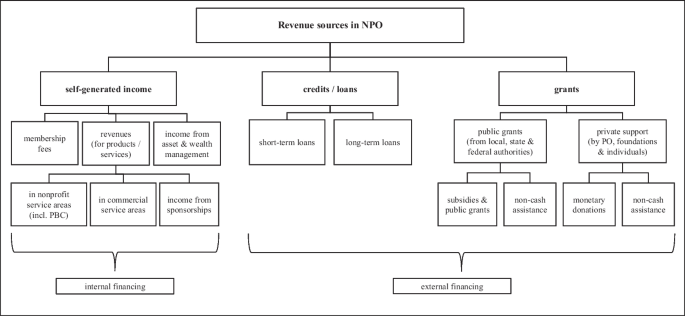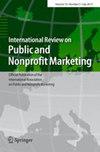实物捐赠——产品慈善的特点与挑战
IF 2.1
Q3 BUSINESS
International Review on Public and Nonprofit Marketing
Pub Date : 2023-11-06
DOI:10.1007/s12208-023-00388-0
引用次数: 0
摘要
摘要实物捐赠是许多非营利组织的重要资源。然而,它们的高度实际相关性尚未反映在非营利性营销和筹款的文献中,这些文献仍然主要关注现金捐赠。在此背景下,我们总结了有关实物捐赠的有限和零碎的文献,并提供了一些实用的见解。本文在以下几个方面做出了贡献:首先,我们对包括实物捐赠在内的非营利组织的多种资源组合进行了收入分类。其次,对(现金和非现金)捐赠的分类对捐赠的异质形式进行了分类,特别是对财务替代品进行了分类。第三,基于这一类型学,我们对实物捐赠进行了全面的定义,作为概念化的重要一步。第四,我们通过三个案例概述了实物捐赠的具体细节和相关挑战,说明了NPO在处理产品慈善方面的实践经验。最后,我们对非营利组织的实物募捐工作提出了一些建议,并指出了进一步研究的途径。本文章由计算机程序翻译,如有差异,请以英文原文为准。

In-kind donations – peculiarities and challenges of product philanthropy
Abstract In-kind donations are an essential resource for many nonprofit organizations (NPO). However, their high practical relevance is not yet reflected in the literature on nonprofit marketing and fundraising which still focuses primarily on cash giving. Against this background, we summarize the limited and fragmentary literature on in-kind giving and provide some practical insights. The paper makes several contributions: first, we present an income classification of NPO’s manifold mix of resource sources that includes in-kind donations. Second, a classification of (cash and non-cash) donations categorizes the heterogeneous forms of donations and, in particular, financial surrogates. Third, and based on this typology, we develop a comprehensive definition of in-kind donations as an important step towards conceptualization. Fourth, we outline the specifics of in-kind donations and associated challenges via three case vignettes that illustrate practical experiences of NPO in dealing with product philanthropy. Finally, we give some recommendations for NPO’s in-kind fundraising endeavours and indicate avenues for further research.
求助全文
通过发布文献求助,成功后即可免费获取论文全文。
去求助
来源期刊
CiteScore
3.80
自引率
23.50%
发文量
26
期刊介绍:
The International Review on Public and Nonprofit Marketing, an international scientific journal, publishes English-language articles and case reports in the field of public and nonprofit marketing and closely related disciplines. Relevant doctoral thesis reviews and book reviews are also welcome. The main objective of the Review is to foster the study of marketing topics from an interdisciplinary perspective and provide a forum for researchers interested in examining these issues from practical and theoretical viewpoints. Establishing a common vocabulary with which to discuss methods, procedures, results and experiences will improve the exchange of ideas between participants of varied backgrounds. To be accessible to a diverse community of academics and professionals, the Review will only accept articles that display strict scientific rigor and excellent expository clarity. First-rate scientific quality is guaranteed by a large editorial board composed of internationally recognized experts from prestigious academic and research institutions. Papers submitted for publication are evaluated through a double blind refereeing process. Manuscripts should not exceed 20 pages (450 words per page). This page limit includes all figures, tables, appendices and references. Officially cited as: Int Rev Public Nonprofit Mark

 求助内容:
求助内容: 应助结果提醒方式:
应助结果提醒方式:


